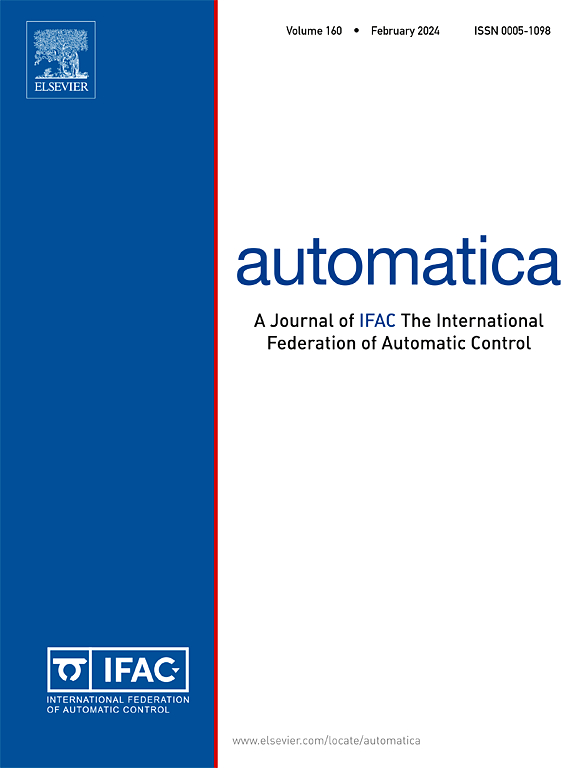Adversarial dynamic games for Markov jump systems: A policy iteration Q-learning method
IF 5.9
2区 计算机科学
Q1 AUTOMATION & CONTROL SYSTEMS
引用次数: 0
Abstract
This paper presents a reinforcement Q-learning approach for solving adversarial dynamic games in Markov jump systems. The control problem is first formulated as a two-player zero-sum dynamic game, where the control policy and the disturbance policy act as adversarial players. To derive the Nash equilibrium control strategies for such games, a set of coupled algebraic Riccati equations is established, with the disturbance attenuation level properly prescribed. On this basis, two novel data-driven parallel Q-learning algorithms are proposed. The advantages of the proposed method are threefold: (i) it does not require precise knowledge of the system dynamics; (ii) it learns the optimal disturbance attenuation level; (iii) it yields Nash equilibrium control strategies. Finally, two simulation examples validate the effectiveness of the proposed method.
马尔可夫跳跃系统的对抗动态博弈:策略迭代q -学习方法
本文提出了一种求解马尔可夫跳跃系统中对抗动态博弈的强化q学习方法。H∞控制问题首先被表述为一个二人零和动态博弈,其中控制策略和干扰策略作为对抗参与者。为了得到这类对策的纳什均衡控制策略,建立了一组耦合的代数Riccati方程,并适当规定了扰动衰减水平。在此基础上,提出了两种新的数据驱动并行q学习算法。所提出的方法的优点有三个:(i)它不需要精确的系统动力学知识;(ii)学习最优扰动衰减电平;(3)得到纳什均衡控制策略。最后,通过两个仿真实例验证了该方法的有效性。
本文章由计算机程序翻译,如有差异,请以英文原文为准。
求助全文
约1分钟内获得全文
求助全文
来源期刊

Automatica
工程技术-工程:电子与电气
CiteScore
10.70
自引率
7.80%
发文量
617
审稿时长
5 months
期刊介绍:
Automatica is a leading archival publication in the field of systems and control. The field encompasses today a broad set of areas and topics, and is thriving not only within itself but also in terms of its impact on other fields, such as communications, computers, biology, energy and economics. Since its inception in 1963, Automatica has kept abreast with the evolution of the field over the years, and has emerged as a leading publication driving the trends in the field.
After being founded in 1963, Automatica became a journal of the International Federation of Automatic Control (IFAC) in 1969. It features a characteristic blend of theoretical and applied papers of archival, lasting value, reporting cutting edge research results by authors across the globe. It features articles in distinct categories, including regular, brief and survey papers, technical communiqués, correspondence items, as well as reviews on published books of interest to the readership. It occasionally publishes special issues on emerging new topics or established mature topics of interest to a broad audience.
Automatica solicits original high-quality contributions in all the categories listed above, and in all areas of systems and control interpreted in a broad sense and evolving constantly. They may be submitted directly to a subject editor or to the Editor-in-Chief if not sure about the subject area. Editorial procedures in place assure careful, fair, and prompt handling of all submitted articles. Accepted papers appear in the journal in the shortest time feasible given production time constraints.
 求助内容:
求助内容: 应助结果提醒方式:
应助结果提醒方式:


